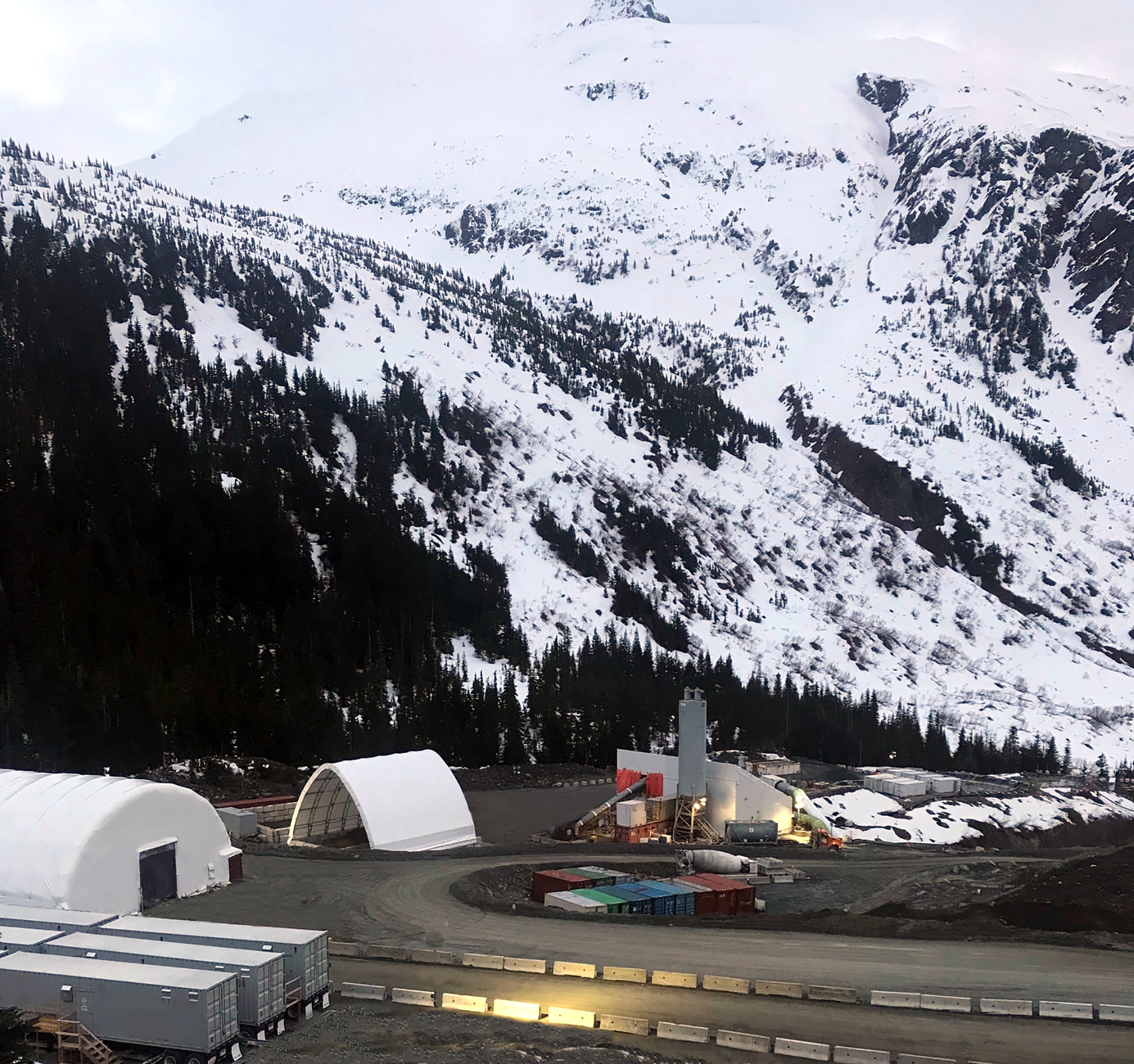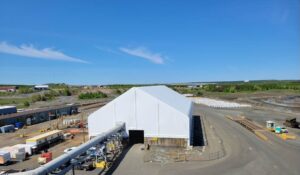Reducing Mining Facilities’ Carbon Footprints with Fabric Structures
by Admin | Dec 4, 2023

Mining is critical for powering our modern world in many ways – from energy acquisition to economic stimulation through material collection. However, people have long been concerned with the carbon footprint mining operations produce. Emissions stem from multiple sources, including heavy machinery, transportation, and pollution, making an all-encompassing solution more challenging. Fabric structures as mining facilities offer a sustainable alternative to traditional mining infrastructure. Keep reading to learn why!
The Carbon Emission Challenge
Traditional mining operations are notorious for their carbon emissions. The International Council on Mining and Metals (ICMM) classifies the mining industry as an emission-intensive sector, which accounts for 4-7% of global greenhouse gasses. The top three contributors to these emissions are:
- Heavy Machinery & Transportation: Mining relies on heavy equipment, such as haul trucks and excavators, which release significant amounts of greenhouse gasses into the atmosphere. Moving mined materials from remote sites to processing facilities to market also requires large volumes of fossil fuel consumption.
- Energy Consumption: Mining operations require fossil fuel use for processing minerals and powering command centers, garages, maintenance facilities, and workshops. This category also includes electricity and heat.
- Indirect Emissions: These emissions account for a mass subset of mining emissions, with the ICMM promoting greenhouse gas reduction in this sector. Indirect emissions come from peripheral activities such as third-party delivery of goods and services, franchises, waste disposal, and employee travel (which includes work commutes).
Our Sustainable Solution for Mining Facilities
Fabric structures are a sustainable alternative to traditional steel buildings. Here’s how they make a difference:
- Energy Efficiency: We engineer our fabric buildings with energy efficiency in mind. The translucent nature of our fabric allows natural light to penetrate, eliminating the need for artificial lighting during the day. Our fabric structures are also thermally non-conductive – they’ll remain temperate regardless of external temperature. In the sweltering summer heat, interiors remain 10-15 degrees cooler, and in the winter, they remain roughly 20 degrees warmer. For additional temperature moderation, fabric structures can be insulated, reducing heating and cooling demands further. Thus, as these mining structures are energy efficient, they reduce electricity and heat carbon emissions.
- Reduced Construction Time: Fabric structures are erected quickly when compared to traditional steel buildings, minimizing the carbon footprint produced by lengthy construction. Rapid deployment and swift setup ensure your mining operations are functioning in little time, further reducing delay frustrations and emissions from machinery and goods transportation. Our customized facilities allow you to optimize your operations efficiently by using your building to protect open mine shafts, create housing, or shield expensive equipment from harsh weather.
- Portability: Our modular structures can be disassembled and relocated with ease. This feature allows mining companies to move buildings closer to their mine sites, reducing the need for new infrastructure. This sustainable method enables companies to recycle infrastructure and eliminate the carbon footprint caused by continual site development.
Beneficially, fabric buildings reduce each of the key contributors to greenhouse gas emissions in the mining industry. Thus, our fabric buildings are sustainable and affordable mining facilities.
Additional Environmental Benefits
While reducing carbon emissions is paramount, fabric facilities offer additional environmental benefits.
- Minimal Land Disturbance: Fabric structure installation prevents mass local ecosystem degradation through minimal land disruption. There is no need for extensive site preparation or excavation, saving time, money, and natural biota.
- Certified Sustainable Fabric: Our fabric is made with sustainability in mind, as it is cradle-to-cradle certified. The Cradle-to-Cradle Certified Product Standard is the world’s most ambitious, actionable standard for designing and making products today in ways that enable a healthy, equitable, and sustainable tomorrow.
- Natural Ventilation: Fabric buildings provide superior ventilation. The shape of our structures combined with our well-ventilated fabric membranes allows optimal air volume while remaining airtight. Thus, the natural capabilities of our buildings reduce the need for energy-intensive HVAC systems.

Summary
The mining industry is at a crossroads, facing increasing pressure to reduce its carbon footprint and operate sustainably. No catch-all solution for reducing carbon emissions exists; however, fabric facilities offer a sustainable alternative to traditional metal-and-wood mining facilities.
To learn more about our mining solutions, click here.
To get started with a free custom quote, click here.
If you’d like to learn more about Calhoun’s sustainability and download our helpful infographic, click here.


